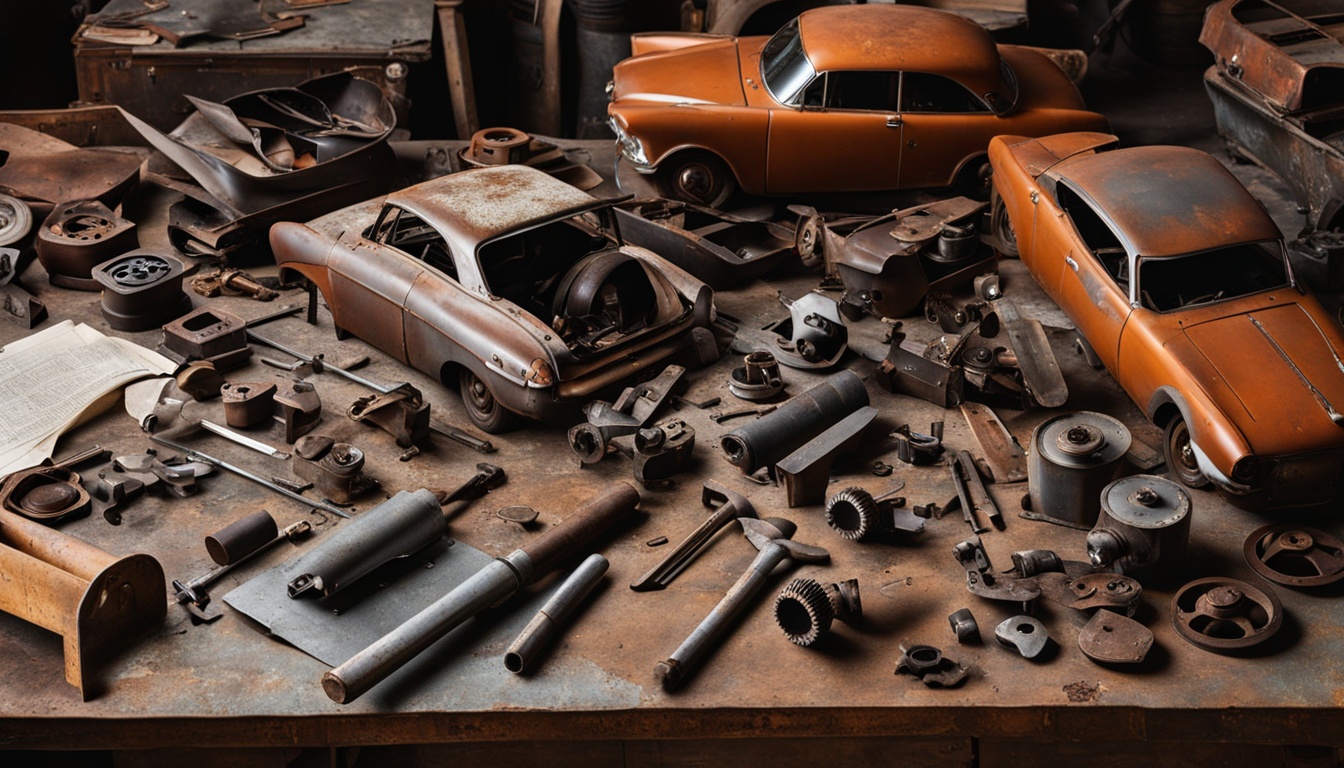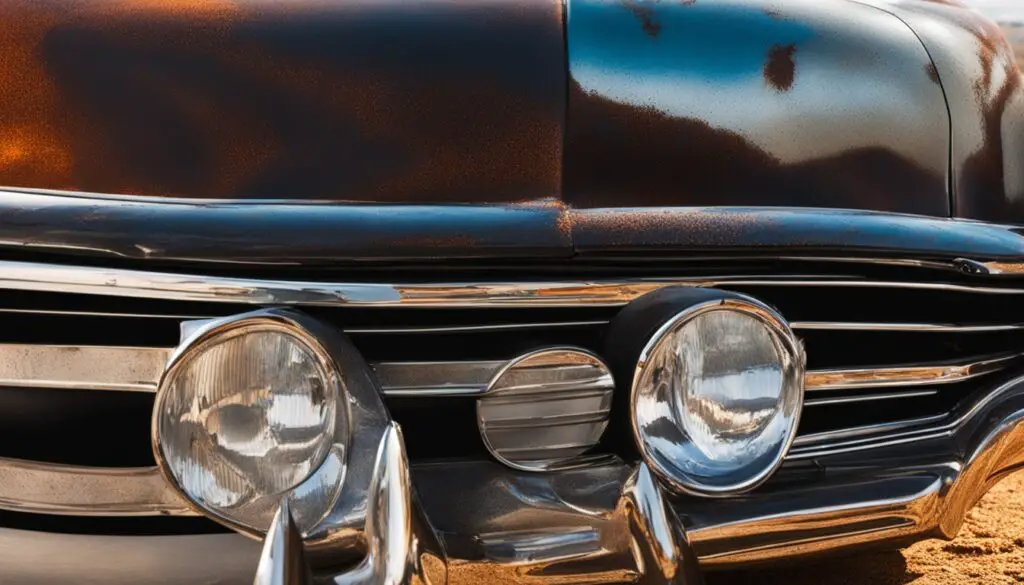
Journey to the Past: Exploring Vintage Car Restoration
Welcome to the fascinating world of working with vintage cars. It’s a journey filled with love and hard work. We aim to bring old cars back to life. As an avid fan, I’m excited to share this adventure with you.
We’ll explore how valuable these old cars really are. You’ll see the effects of restoring them. And learn about the new techniques that make this process amazing. We’ll dive into the history of cars and discover the beauty of them long ago.
Key Takeaways:
- Vintage car restoration goes beyond simple repair. It keeps the old car’s true spirit alive while making it work better.
- The process is all about careful research, taking the car apart, fixing every piece, and putting it back together.
- Vintage cars are important historically and can be worth a lot. This affects the way people restore cars and come up with new ideas.
- Keeping old cars in good shape helps create jobs and is good for the environment.
- Restoring vintage cars is not just fun; it means connecting our own stories with the stories of the past.
The Step-by-Step Process of Vintage Car Restoration
Restoring a vintage car is a detailed process needing skills, patience, and dedication. Each step brings a classic back to life. Let’s dive into how it’s done.
Assessing the Vehicle
A deep look into the car’s condition comes first. This tells us what work is needed and helps set goals and budget.
Planning and Budgeting
Making a plan and setting a budget are key. This means figuring out each restoration phase, the timeline, and costs.
Gathering Tools and Resources
The right tools are essential. This includes basics like wrenches to special equipment. They make the work easier and better.
Disassembly
Next is taking the car apart carefully. Each part is documented and labeled for easy reassembly without mix-ups.
Bodywork Restoration
Fixing rust, dents, and more is crucial. This stage might need repairs, new parts, and rust removal to make the body look good again.
Engine Restoration
Making the engine work like new is complex. It involves changing worn parts and rebuilding. It needs careful work and skilled hands.
Interior Refurbishment
Improving the inside of the car is next. Seats are redone, dashboards are refreshed, and other parts made better or new.
Painting and Finishing
Preparing, painting, and protecting the car’s outside is important. The paint job needs to be perfect to match the car’s quality.
Assembly
Once everything’s fixed, it’s time to put it all back together. Every part is fitted correctly following detailed plans.
Testing and Tuning
The car is finely tuned and tested for peak performance. This makes sure everything works together smoothly after reassembly.
Final Touches
The finishing touches wrap up the project. This includes detailed cleaning, shiny polish, and ensuring top quality in every detail.
Restoration Challenges and Problem-Solving
Challenges like rust, finding parts, or sticking to the budget can come up. But, with smart solutions, these issues can be fixed for an amazing result.
Celebrating the Finished Project
Finally, the completed car is celebrated. This involves quality checks, showing off the work, joining car groups, and starting a care routine.

Conclusion
Restoring vintage cars is more than fixing machinery. It’s a journey back in time, full of joy and connection. It’s a way to explore and keep the history of cars alive.
By bringing a vintage car back to life, I honor its original craftsmanship. This work links past generations with the now. It also shares love for old cars with young people.
Fixing up old cars is my way of protecting car culture and history. It keeps the spirit of classic cars going. Plus, it’s a way to celebrate the beauty and skill of the past, making memories that last.
FAQ
What is vintage car restoration?
Vintage car restoration brings old cars back to life. Specialists work carefully to keep them authentic while making them work better. It’s a way to cherish the past.
Why is vintage car restoration important?
It’s crucial for saving car history. It lets us feel the thrill of driving these old gems. Plus, it helps us understand the spirit of past times.
What is involved in the vintage car restoration process?
First, you evaluate the car. Then, you make a plan and gather what’s needed. Next is taking it apart. After that, work on the body and engine begins.
Later, the inside gets fixed up. The car then gets painted and shines. Finally, you put it all back together, test everything, and add those last details.
What challenges are involved in vintage car restoration?
Restoring old cars can be tough. Rust, damage, and finding the right parts are hurdles. Managing money and staying patient are big tasks too.
But, with the right skills and a strong will, these issues can be tackled.
How can I get involved in vintage car restoration?
Join local car groups to learn and get inspired. Look for teachers who can guide you. Dive into the vast history and skills of this craft.
